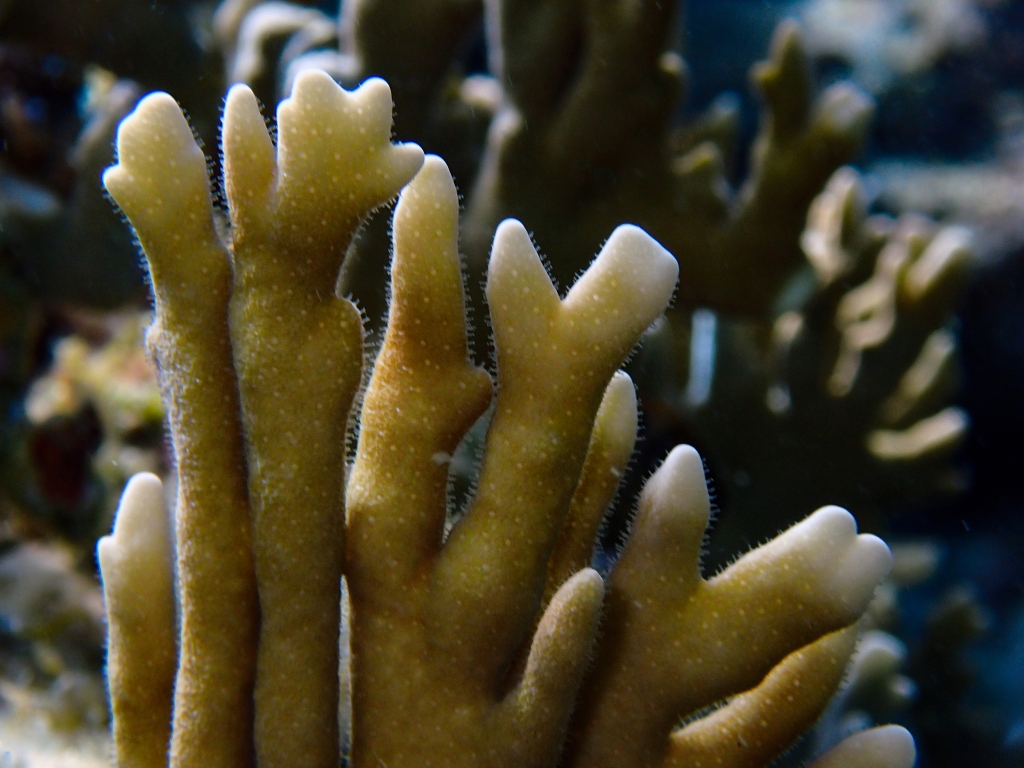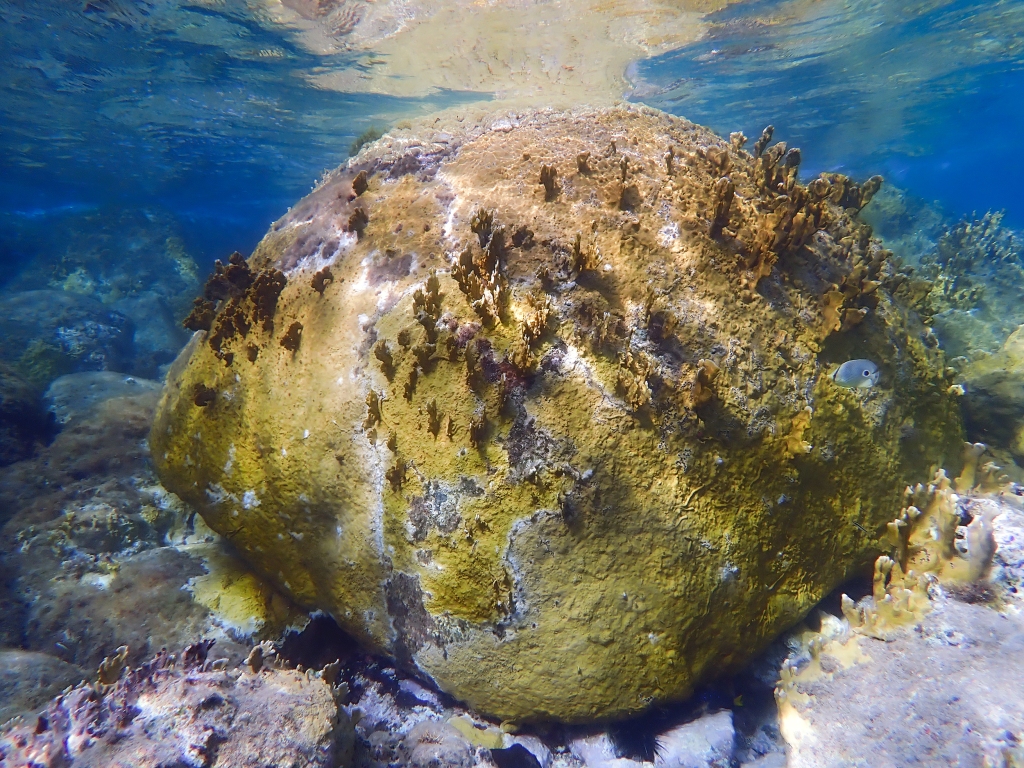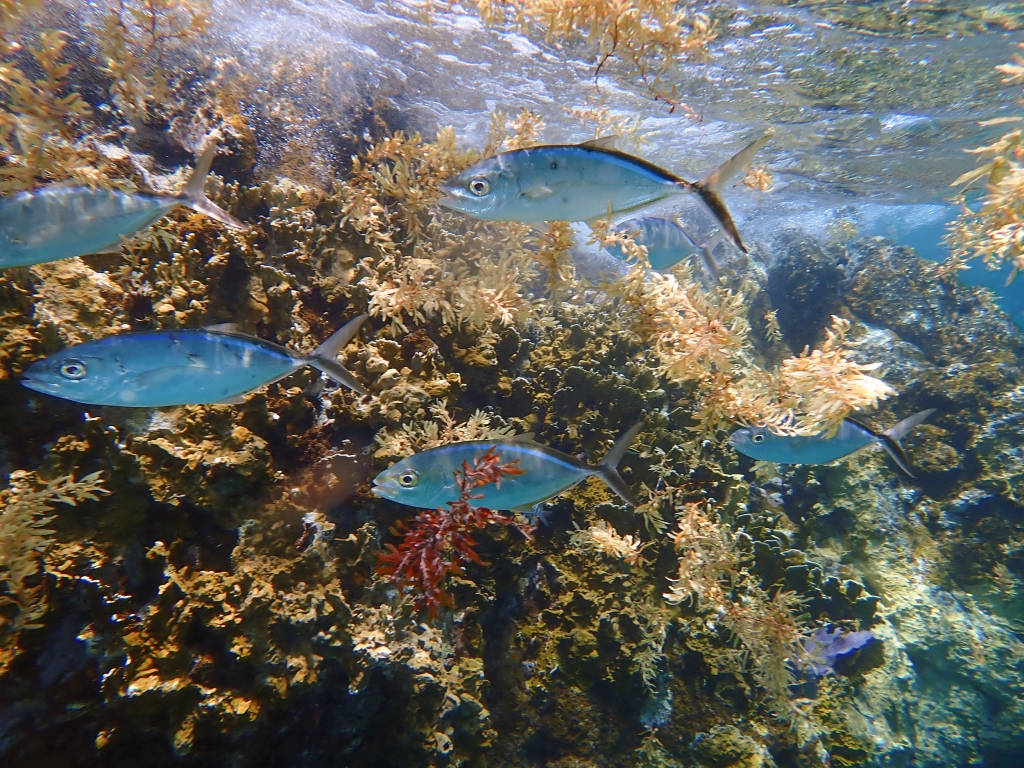
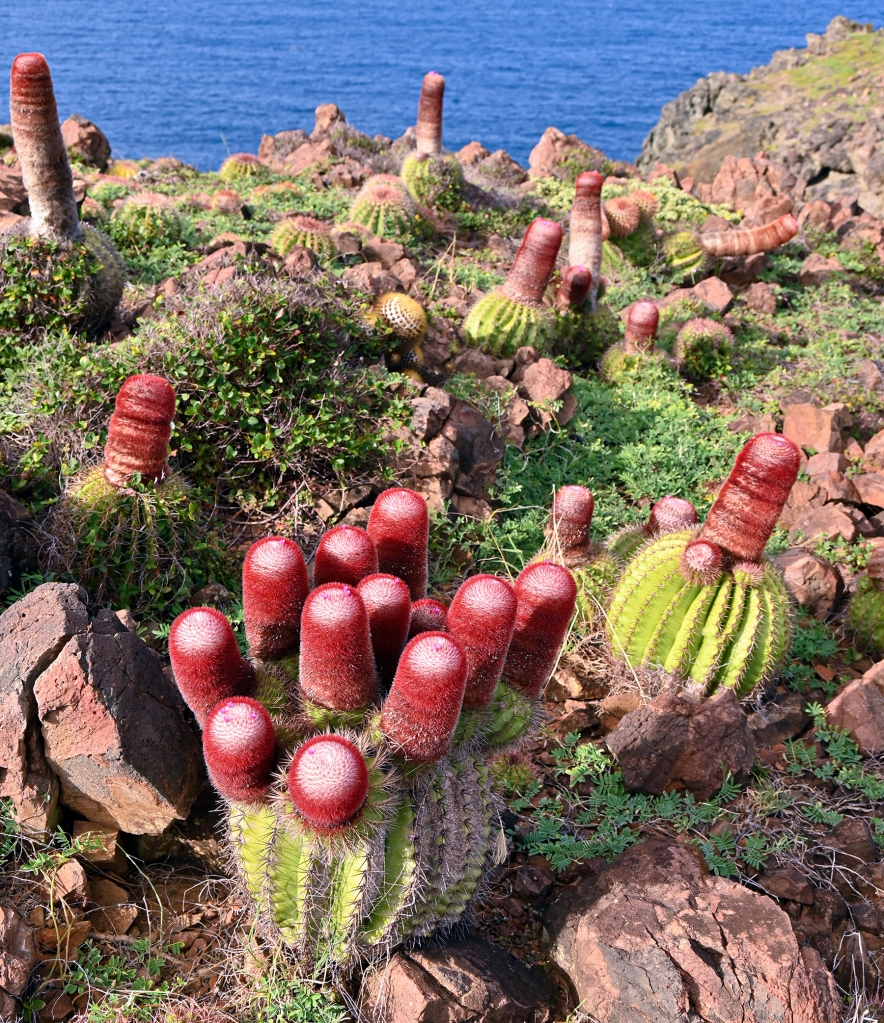
Stella Maris is anchored at Île Fourchue, an uninhabited rock near Saint-Barthélemy, and the only celebrity in sight is an elegant tropicbird flying in graceful pirouettes above the sailboat.
As a gentle swell rolls in from the Caribbean Sea, I reflect on disparity in nature, including human nature. Life is more polarized than I remember it being: wealth and poverty, feast and famine, politics, Israel, Palestine, Ukraine, Russia. Common sense tells me it has always been this way. It just feels different now. The nature of a place like Île Fourchue helps put these contrasts into perspective. It is also a balm in troubling times.
Île Fourchue can only be reached by boat. There are no airstrips, roads, homes, or hotels. I am spending a week at anchor in what was once the caldera of an ancient volcano. The island is now part of the Réserve Naturelle. The other St. Barth, the St Barth of the Kardashians, is just over the horizon. Île Fourchue is a world apart.
A few other boats, primarily day-trippers, come and go in this small bay. When they leave, during that magic time at the end of the day when the light becomes soft, I roam freely across the empty hillsides of Île Fourchue and it becomes a place of my own. I feel the nature around me. I am included.
Another man who sought the solitude of Île Fourchue was named Balthazar Biguard, an immigrant from Marseilles fleeing the French Revolution. Not much is known about Monsieur Biguard except that the island of Saint-Barthélemy was not the refuge he hoped it would be. He fled St. Barth to live with the birds and the cactus on Île Fourchue. Balthazar Biguard is the only human known to have lived on this island. After what must have been a hard-scrabble life here, he died in 1827 at the age of 85. His remains are unmarked.
Today, the only inhabitants of Île Fourchue are its flora and fauna. Among those with feathers are the handsome ground-nesting brown boobies that oil and comb their plumage with a serrated toenail called a preen-claw. The boobies are spectacular divers, plunging into the ocean at high speed to capture swimming prey. They also pursue flying fish in the air. The brown boobies regurgitate what they catch into the mouths of their chicks, perpetuating the life cycle in what is one of the most important breeding sites of the Caribbean.

Glamorous red-billed tropicbirds share the cliffside roosts of Île Fourchue. They communicate with a melodious chitter as they spiral in the thermals above the rock. These tropicbirds mature to the size of a common gull, but most adults have tail streamers that are two times their body length. Some ornithologists describe the streamers as sexual ornaments. I get it. This beautiful flier spends most of its life in the air because it cannot stand on land. Tropicbirds require an unobstructed launching pad to take flight.
Taxonomy is usually too tedious to include in casual conversation. Still, the scientific name for the tropicbird—Phaethon aethereus—deserves mention: Phaethon is derived from the Ancient Greek meaning “sun,” while the species name comes from the Latin aetherius meaning “heavenly.”
Heavenly Sun. Who says there is no romanticism in science?
Goats once roamed Île Fourchue, but like their human neighbors in the cafes of St. Barth, they were conspicuous consumers. They devoured everything on the island, leaving it a wasteland. Conservationists finally took notice a couple of decades ago, and when the goats were “banished,” wild grasses returned. Île Fourchue was given new life.
Once the fauna was under control on Île Fourchue, the indigenous flora rooted in volcanic rock flourished. Sweeping grass meadows provide fertile soil for the most stunning wild cactus gardens imaginable. Hundreds, possibly thousands, of cacti thrive on the island. This genus of Melocactus has over 30 species with fun common names such as Turks Cap, Pope’s Head, Devil’s Head, Mother-in-Law’s Pincushion, and Horse Crippler. The tourism website AntiguaNice.com calls it the most “grotesque cactus with the wickedest of spines,” but I think it is one of the most beautiful plants I have ever seen. Those “wickedest of spines” on the cactus barrel give way to a mass of areoles growing distinctive round caps resembling a Turkish fez. Tiny hot pink fruit that looks like spicy chili peppers adorn the cap like jewels.
But even in paradise, nothing is perfect (thanks to that guy and his girlfriend who snacked on an apple in the Garden). As I climb along the edge of a cliff, I watch a large iguana–the only one I have seen during a week here–stalking the nest of a brown booby. It will likely eat the hatchling when the parent leaves the nest to find food. On another cliff face, a frigatebird engaged in kleptoparasitism (food stealing) hassles an unfledged booby chick and forces it over the rocks and into the sea. Boobies, in turn, have been observed stealing prey from frigatebirds as they transfer food to their young.
I come to no life-changing conclusions during my week at Île Fourchue. There will always be beauty and conflict in nature, just as there is in human nature. Some things we can change, and other things like politics and war leave most of us powerless. Nature helps me understand that while we don’t have to acquiesce, we do need to adapt. While the beautiful people an island away dance to Nero’s fiddle, I will adapt to the song of nature on Île Fourchue.
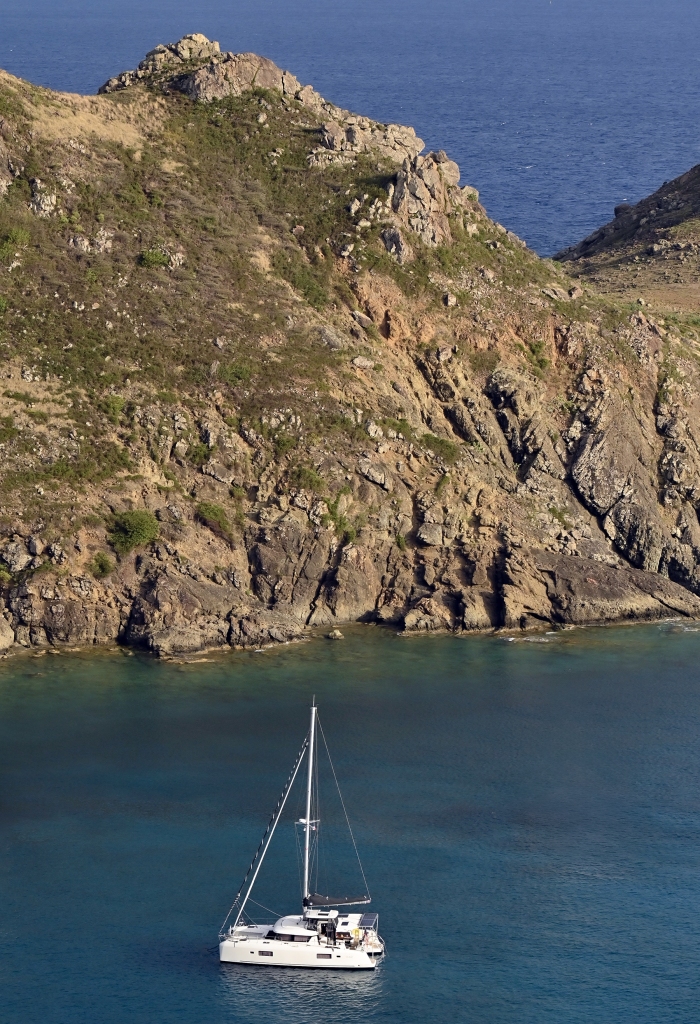
As always, sailing is not just about the wind and the sea; the places, the flora, fauna, and people encountered along the way are equally important.
Please click “Follow” so that you don’t miss a new update,- and please consider sharing this post with others who might enjoy following the voyage. I welcome your comments and will always respond when I have an Internet connection. I will never share your personal information.
Instagram: StellaMarisSailing / Facebook: Jeffrey Cardenas
Text, Photography, and Videos © Jeffrey Cardenas 2024
Let this be a time of grace and peace in our lives – Rev. John C. Baker

